
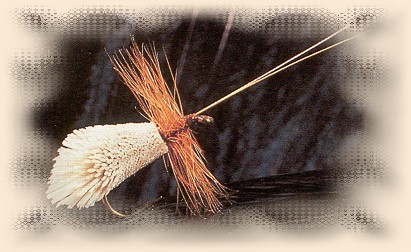 Goddard Caddis |
|
|
MaterialsHook: Standard dry fly, sizes 16 to 8 (the hook shown is a Partridge L3A). Tying Steps: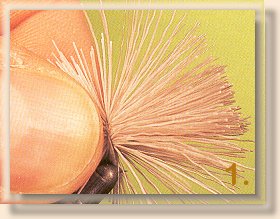
1. Start the size-A thread at the bend and just
enough tight turns to get the thread securely fastened.
Comb a bunch of deer hair, snip off its tips, and hold the
bunch atop the hook's bend. Take two loose turns of thread
around the bunch; then work the bunch down around the shank.
Hold the hair bunch firmly in place as you pull the thread
tight.

|
|
2. Maintain thread tension as you firmly draw back the hair
and add four tight thread turns at the hair's base.
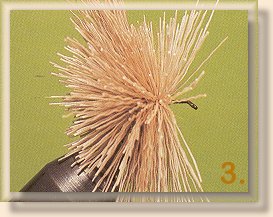 3. Spin on a smaller bunch of deer; compress both hair bunches together. Continue spinning on and compressing smaller and smaller bunches (a total as few as two for small hooks and up to four on large hooks) until slightly over half the shank is covered.
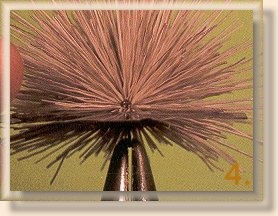
|
|
4. Whip finish the thread. Remove the hook from your vise
and sight down the front of the hook as you make your first
cut along the underside of the spun hair. Cut close, but not
too close! (In the photograph, I'm holding the hook in an
old set of fly-vise jaw - my favorite method.)
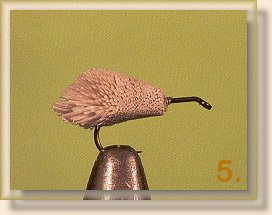 5. With scissors, a razor blade, or both, trim the body-wing to a wedge shape. The large end of the wedge should slant as shown.
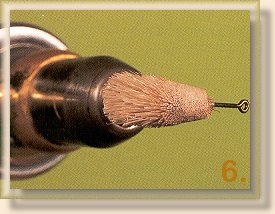 6. Top view of the body-wing.
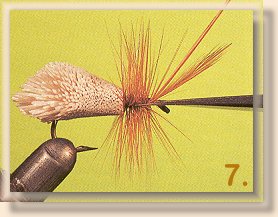 7. Replace the hook in your vise, and then start some 8/0 or 6/0 thread over the end of the size-A thread. Tie in two hackles, and then wrap one and secure its tip with tight thread turns. Wind the second hackle through the first and secure its tip. Trim both tips. Add stripped-hackle-stem antennas if you like. Finish with a thread head and whip finish. Skip Morris
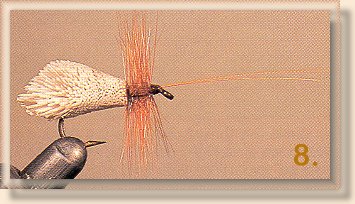
Fishing the Goddard CaddisThe Goddard Caddis was designed as a rough water fly, one that would not sink, and still be visible on fast water. It is fished as a dry fly, upstream or quartering upstream, mending line to obtain the longest possible float.Credits: From the Art of Tying the Dry Fly by Skip Morris, published by Frank Amato Publications, Inc. We greatly appreciate use permission. |
|
For more great flies, check out:
Beginning Fly Tying,
Intermediate Fly Tying and Advanced
Fly Tying.
|